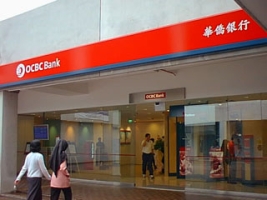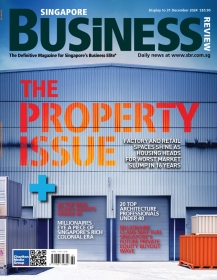Singapore
The Tiger's turnaround: Tiger Airways posts $14.1m profit for Q2
The budget airline’s revenue for the quarter is a $16.4 million improvement over the $2.3 million loss recorded a year ago. The improvement in Tiger's books can be attributed to higher turnovers, strong passenger growth and strict control of unit costs. Growth in passenger volume outstripped seat capacity growth of 21.9%, while the total Cost per Available Seat Kilometre (CASK) went down 3.1% compared to the previous year. Tony Davis, President and Group CEO, said: “We are pleased with the second quarter results posted by the Group. Achieving a 10% net profit margin, 35% revenue growth and lower unit costs, on significant capacity growth of 22% is a solid result. “Forward bookings remain strong, particularly for the peak travel period between December and February. To capitalise on this peak period, Tiger Airways Australia is increasing its fleet to 12 aircraft by the financial year-end. “The airlines continue to focus on maximising profitability through the generation of additional ancillary revenue streams. In percentage terms, Tiger Airways is currently the fifth highest generator of ancillary revenue globally, and our aim is to be in the world’s top three airlines. During the quarter, we introduced two new ancillary products – boardmefirstTM, our priority boarding service, and our new flexible ticket option. Both products have been popular with our passengers. In addition, we have recently introduced Stripes, a membership programme that provides members priority access to promotions and the lowest fares. “We continue to work with Thai Airways on the establishment of our low cost business in Thailand, to be called Thai Tiger. “Finally, we are pleased to have recently won two awards; the Low Cost Airline of the Year award from the Centre for Asia Pacific Aviation, and the Most Transparent Award in the New Issues Category from the Securities Investors Association of Singapore” said Tony Davis.
The Tiger's turnaround: Tiger Airways posts $14.1m profit for Q2
The budget airline’s revenue for the quarter is a $16.4 million improvement over the $2.3 million loss recorded a year ago. The improvement in Tiger's books can be attributed to higher turnovers, strong passenger growth and strict control of unit costs. Growth in passenger volume outstripped seat capacity growth of 21.9%, while the total Cost per Available Seat Kilometre (CASK) went down 3.1% compared to the previous year. Tony Davis, President and Group CEO, said: “We are pleased with the second quarter results posted by the Group. Achieving a 10% net profit margin, 35% revenue growth and lower unit costs, on significant capacity growth of 22% is a solid result. “Forward bookings remain strong, particularly for the peak travel period between December and February. To capitalise on this peak period, Tiger Airways Australia is increasing its fleet to 12 aircraft by the financial year-end. “The airlines continue to focus on maximising profitability through the generation of additional ancillary revenue streams. In percentage terms, Tiger Airways is currently the fifth highest generator of ancillary revenue globally, and our aim is to be in the world’s top three airlines. During the quarter, we introduced two new ancillary products – boardmefirstTM, our priority boarding service, and our new flexible ticket option. Both products have been popular with our passengers. In addition, we have recently introduced Stripes, a membership programme that provides members priority access to promotions and the lowest fares. “We continue to work with Thai Airways on the establishment of our low cost business in Thailand, to be called Thai Tiger. “Finally, we are pleased to have recently won two awards; the Low Cost Airline of the Year award from the Centre for Asia Pacific Aviation, and the Most Transparent Award in the New Issues Category from the Securities Investors Association of Singapore” said Tony Davis.
Good to Great Business – What differentiates the Employer of Choice?
Companies today dangle all sorts of unique ‘carrots’ in a bid to attract the best and brightest. All the more so as the Gen Y workforce grows. These high-performance and high-maintenance multi-taskers increasingly eschew monetary incentives for better Work-Life balance. Employers are realizing that you can’t just make the employee work; they have to want to work.
SGX posts 17-month trading high, named “Derivatives Exchange of the Year”
Apart from receiving the award from Asia Risk magazine, the exchange also announced that its October SDAV reached $2.1 billion, the highest since May 2009.
DBS Bank's "A" rating now for good
Fitch Ratings has assigned a final rating of 'A' to the bank's dollar Non-Cumulative Non-Convertible Non-Voting Preference Shares Callable in 2020. This follows the completion of the issuance of the Preference Shares and the receipt of documents conforming to information previously received. The final rating is the same as the expected rating assigned on 14 October 2010.
GSTF launches Digital Library
The GSTF Digital Library (DL)’s mission is to make its resources available, useful to researchers and professionals worldwide and to sustain and preserve a universal collection of knowledge and creativity for future generations. It will provide 24/7 access to a large volume of online collection of conference proceedings, journal articles, and books in the areas of Computer Science, Information Systems, Electrical and Computer Engineering, Bio Informatics, and Business.
More QE means more headaches for Asia
A jump of 56.9 from 54 in the ISM Index might mean good news for the West, but does not bode well for Asia.
Salaries in Vietnam to rise higher than Singapore's in 2011
While Singapore employees can expect a salary increase by 4% next year, a predicted 2.4% inflation rate will pull down the actual wage increase to just 1.6%.
IEEE to open new branch at Fusionopolis
IEEE is collaborating with A*STAR and the Singapore Economic Development Board to enhance Singapore’s position as a global business center.
New STI Dividend Index to capture dividend returns of constituents
New index enables investors to view the expected dividends of its constituents and to create fresh investment opportunities.
Keppel sells 90% of 220 units in Tianjin Eco-City
The eco-development is expected to yield 5,000 homes and commercial developments with a total gross floor area of 680,000 sm.
Quantity vs. quality: Employers hiring more but are short of qualified candidates
Job placements in Singapore rose by 5.2% in Q310 compared to Q2 but shortage in talent across various fields are driving companies to look for employees overseas.
The shopping spree continues: Only 1 in 10 Singaporeans feel the recession
Unwavering confidence in the economy prompts 51% of Singapore consumers to splurge on new clothes, gadgets and travel in the here and now as compared to the global average of 35%.
Sought after service: Service sector spurs Singapore economy growth
Despite an unemployment rate of 2.1% in 3Q10, the services sector was able to generate a total of 24,100 new jobs as compared to a loss of about 400 jobs in the manufacturing sector.
Success of SGX-ASX deal yet to be seen
Recent changes in the Australian market and differences in legal and regulatory regimes between Australia and Singapore pose execution challenges for the two exchange companies.
OCBC nine months' profit up 20% to S$1.75bln
OCBC’s revenue momentum remains strong behind loan growth, robust fee revenues, and healthy contributions from Great Eastern and Bank of Singapore.
Singapore Airlines inaugurates Tokyo Haneda services
SIA’s operations to Narita and Haneda airports bring in a total of 47 weekly flights to and from Japan.
CapitaLand first nine months profit up 349% to S$751mln
Higher development profits and divestment gains drove almost four-fold growth.



















 Advertise
Advertise


















